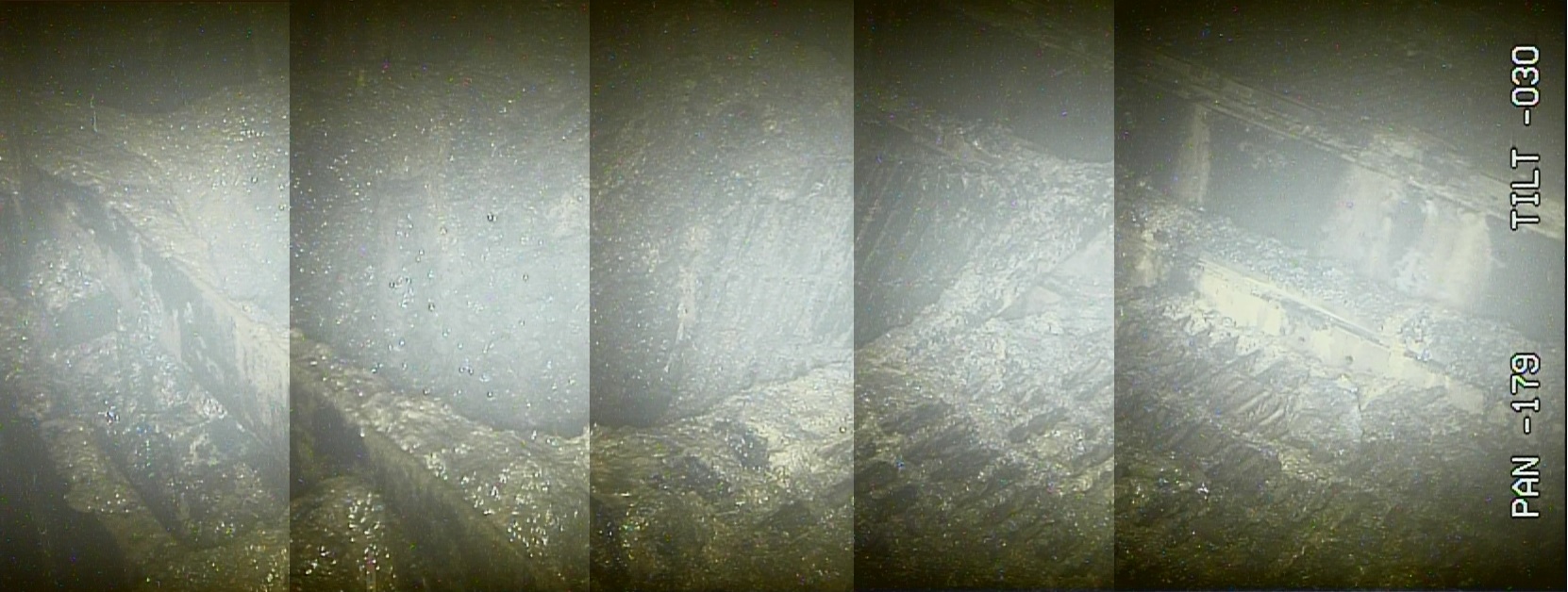Это решётчатый пол помещения под реактором и "радиационно-индуцированная химическая деградация кориумных масс".

В начале 2017 года уровень радиации в реакторах Фукусимы (Дайичи) достиг наивысших значений со времени катастрофы в 2011 году.
читать дальшеThey played the video from inside the PCV first. Then explained the document listed above, the one with the Conclusions on page 5 (up to 28:54). Then took questions.
- Q: What could that "sediment" be? A: We can't say for sure yet. There's still the possibility that it's made of various materials such as melted insulation (lots of aluminum in insulation) or melted cable cover... We're still analyzind thes eimages and hope to get more information.
- Q: Could it be a mixture of melted fuel and components too? A: We just can't say yet. Not enough information.
- Q: Is there any information that it is NOT corium debris? A: We can't say yet, we're gonna insert the "scorpion" robot it and get more information. We'll get temperature, radiation values and we'll be able to say more.
- Q: Watching those images there was a lot of noise, can you say from that that there was an extremely high radiation in there? A: We can't give a figure from that, we'll keep analyzing the results. Q: How is the noise in these images, compared to others in the past? A: We'll make such an analysis too, look at those images and noise using video software, but there are large margins of error in such an analysis. Q: In some parts it's ot clear whether that is water falling down like rain or static/artifacts/noise cause by radiation. A: There is certainly some of that noise too. But at first glance it looks relatively low. But how many Sv is that - we'll be able to say that maybe later after serious evaluation. Those things that move in groups from up down, or sometimes at an angle i the image - those are water drops.
- (33:24) Q: If the sediment seen in the images is corium debris - would that cause a much more intense radiation? A: We can't say yet, need more analysis, there are many things inside the reactor that could have melted. Q: So you can't say definitely, "the radiation is low, therefore it's not melted fuel", either? A: Indeed.
- (34:00) There was that "flat bar" with a height of 9 cm. Looking at this photo, there's this portion where the grating is gone - is there a place where a lump of sediment is visible? A: Yes it appears so. Q: A pile of sediment, a few centimeters thick? A: Yes that's what we see too. Q: About the reason why that grating portion is gone..? A: We're still analyzing that and hope to get more info by further investigation.
- (34:56) Q: In that photo with the "slot opening", the left side of the photo means down, right? A: Yes. Consider that the grating is always "down". You might have to rotate that page 90 degrees to get the right position. Q: What is seen beyond the "slot opening"? A: The black space underneath the grating, where light does not reach. Q: Beyond that it gets whiter... A: Difficult to say, maybe some reflection of light. Q: As for the next robot investigation, do you estimate that there will not be significant obstacles/difficulties? A: We'll have to analyze a lot more. Of course we must avoid that area with no grating. Q: So apart from such re-consideration, the robot investigation itself should be doable, you'll get there and see more? A: Toshiba has a mock-up of the area and we'll investigate more the sediment situation and the route that must be taken.
- (37:36) Q: This time you got these images that you've explained to us, what is your evaluation of this result? A: We're happy about being able to carry out the investigation as planned, we didn't have before any such images of the lower part of the PCV, so it's very precious data... We saw that many/most hardware components are still in place, but cooling water falling through shows there is certainly damage to the bottom of the RPV, even though this time we can't say more, haven't seen the degree of damage.

